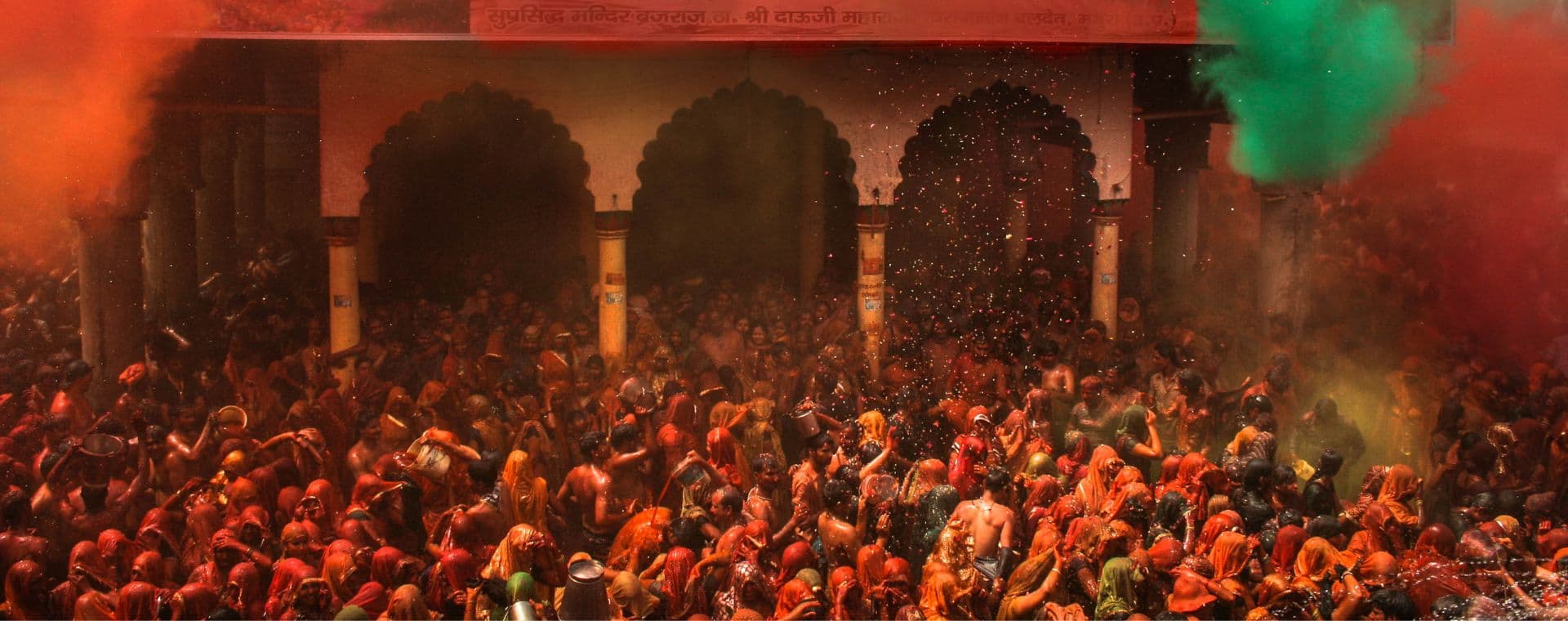
Holi, also known as the Festival of Colors, is one of the most vibrant and joyous festivals celebrated in India. This ancient Hindu festival heralds the arrival of spring and symbolizes the triumph of good over evil, making it a time of immense joy, camaraderie, and cultural revelry. On the India Travel Life blog, we invite you to dive into the kaleidoscope of colors and traditions that define this exuberant celebration.
The Origins of Holi:
Rooted in Hindu mythology, Holi commemorates various legends, including the triumph of Prahlad over the demoness Holika and the divine love of Radha and Krishna. These tales imbue the festival with rich symbolism and meaning, inspiring revelers to embrace the spirit of unity, forgiveness, and renewal.
Preparations and Rituals:
In the days leading up to Holi, households across India buzz with activity as preparations commence. People clean their homes, stock up on vibrant colored powders known as “gulal,” and gather ingredients for traditional sweets like “gujiya” and “thandai.” On the eve of Holi, communities come together for bonfires known as “Holika Dahan,” where effigies of Holika are burnt amidst chanting and rituals.

The Joyous Celebration:
Holi festivities kick off with a riot of colors as people take to the streets, parks, and squares to partake in the revelry. Friends, family, and strangers alike join in the merriment, smearing each other with colors, exchanging greetings, and dancing to the beat of drums and traditional folk music. Water guns, balloons, and water-filled buckets add an extra element of fun to the festivities as revelers douse each other in colored water, spreading laughter and cheer.
Cultural Significance:
Beyond its exuberant celebrations, Holi holds deep cultural significance in India. It transcends barriers of caste, creed, and social status, fostering a sense of unity and camaraderie among people from all walks of life. The festival embodies the spirit of inclusivity and joy, inviting everyone to come together and embrace the colors of life.
Regional Variations:
While Holi is celebrated with gusto across India, each region adds its own unique flavor to the festivities. In Mathura and Vrindavan, the birthplace of Lord Krishna, Holi takes on a spiritual dimension with vibrant processions, temple rituals, and reenactments of Krishna’s playful antics with the gopis. In Punjab, Holi coincides with the harvest festival of Baisakhi, marked by lively folk dances and traditional feasts.

Most Celebrated Cities for Holi:
Mathura and Vrindavan, Uttar Pradesh: Experience the grandeur of Holi celebrations in the land of Lord Krishna, where the festival is celebrated with unparalleled zeal and fervor. Join the colorful processions, witness the traditional “Lathmar Holi” in Barsana, and immerse yourself in the divine aura of the temples.
Barsana, Uttar Pradesh: Witness the unique “Lathmar Holi” festivities in Barsana, where women playfully beat men with sticks in a reenactment of Radha’s playful retaliation against Krishna.
Jaipur, Rajasthan: Explore the royal heritage of Jaipur while indulging in the colorful festivities of Holi. Witness the magnificent procession of elephants at the Elephant Festival and immerse yourself in the joyous atmosphere of the city.
Delhi: Experience the cosmopolitan charm of Delhi during Holi, where neighborhoods come alive with vibrant colors, music, and street food. Join the revelry at popular spots like Connaught Place, India Gate, and Hauz Khas Village.

Famous Foods for Holi:
No Holi celebration is complete without indulging in delicious festive treats. Some of the famous foods associated with Holi include:
- Gujiya: A sweet dumpling filled with khoya, dried fruits, and nuts, deep-fried to golden perfection.
- Thandai: A refreshing drink made with a blend of milk, almonds, pistachios, cardamom, and saffron, often spiked with bhang (cannabis paste) for an added kick.
- Dahi Vada: Soft lentil dumplings soaked in creamy yogurt and topped with tangy tamarind chutney and spicy masalas.
Tips for Celebrating Holi Safely:
As you immerse yourself in the jubilant atmosphere of Holi, it’s essential to keep safety in mind. Here are a few tips to ensure a safe and enjoyable celebration:
- Use natural, non-toxic colors to protect your skin and health.
- Apply oil or moisturizer to your skin and hair before playing Holi to make it easier to wash off the colors later.
- Protect your eyes by wearing sunglasses or goggles during the festivities.
- Stay hydrated and avoid excessive consumption of alcohol or intoxicants.
- Respect personal boundaries and ask for consent before applying colors to others.
Conclusion:
Holi is more than just a festival—it’s a celebration of life, love, and togetherness that transcends cultural boundaries and brings people closer. As you experience the kaleidoscope of colors and emotions that define Holi, may you be filled with joy, laughter, and a renewed sense of camaraderie. Happy Holi from the India Travel Life family!

Ready to explore the beauty and diversity of India beyond the Holi festivities? Plan your dream holiday with Master Trip, your ultimate travel companion for unforgettable adventures. Whether you’re seeking serene beaches, majestic mountains, or cultural wonders, we’ve got you covered. Book your next adventure with Master Trip and embark on a journey of discovery!
